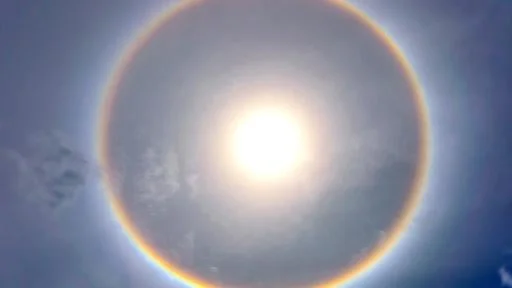
Earth Dodges Solar Bullet: Filament Eruption and Geomagnetic Storm Alert
The sun has been putting on quite a show this week, with stunning **filament eruptions** and heightened solar activity. While these events are visually spectacular, they also raise concerns about potential impacts on Earth. Let's dive into the latest developments and what they mean for us.
On May 7, a massive solar filament erupted from the sun, creating a jaw-dropping display. 
The good news? "The sun is doing just enough to show that it still has what it takes to produce activity while also dodging Earth at all costs," space weather forecaster Sara Housseal wrote on X. In this instance, the filament was oriented away from Earth, meaning the eruption will have no direct impact on our planet.
However, that doesn't mean we're entirely out of the woods. Forecasters are still keeping a close eye on solar activity. The UK Met Office predicts that a weakening high-speed solar wind stream and possible glancing blows from previous CMEs could trigger auroras at high latitudes late Wednesday (May 7) or early Thursday (May 8), with another chance on Friday (May 9) when another high-speed solar wind stream is expected to strike. These combined events could produce Minor Geomagnetic Storm (G1) conditions, potentially making the aurora visible in northern regions.
Adding to the cosmic cocktail, a “red-level” geomagnetic storm is expected to hit Earth on Friday, May 9. This storm could cause a deterioration in well-being for many people, with potential disruptions to communication systems. Common symptoms associated with geomagnetic storms include headaches, dizziness, fatigue, and sleep disturbances. Those sensitive to weather changes, the elderly, pregnant women, young children, and individuals with cardiovascular issues may experience more pronounced effects.
Meanwhile, data from the U.S. Space Weather Prediction Center indicates several filament eruptions occurred between May 6 and 7. 
Protecting yourself from geomagnetic storms involves simple yet effective strategies: prioritize full sleep, maintain a balanced diet, stay hydrated, avoid excessive stimulants and unhealthy foods, minimize stress, engage in moderate physical activity, and reduce screen time, especially in the evening. Monitor blood pressure and overall health, and seek medical help if you feel unwell.
While Earth has dodged a major solar impact this time, the increased solar activity serves as a reminder of the dynamic nature of our Sun and its potential influence on our planet. What are your thoughts on the increasing solar activity and its possible effects on our technology and health? Share your comments below!